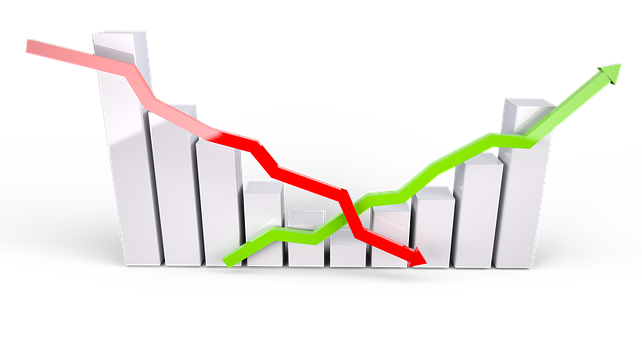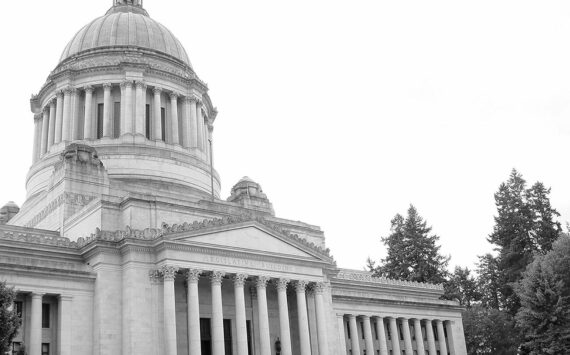A bit more than 10 years after the most severe financial crisis since the Great Depression ended, the U.S. economy is again making history—this time positively. The American economy is now in the longest expansion in history—one that has entered its 11th year.
Of course, given that every expansion in U.S. history has ended in recession, leaders of construction firms are rightly wondering when the record-setting expansion will end. Looking at conditions on the ground, it likely won’t be in 2019, but 2020 could be problematic for the broader economy and 2021 for a significant number of contractors.
You may have heard that Aladdin has been in theaters. Spoiler alert—it’s about a genie, a magic lamp and three wishes. If you gained ownership of the lamp, you would have many options for your wishes: money, love, world peace, eternal life, the new mid-engine Corvette, etc. As a stakeholder in the health of the U.S. economy, one of your wishes might be for an economy offering a 50-year low in unemployment, the fastest wage growth in roughly a decade, a booming stock market and constrained inflation.
It sounds impossible, but your wish came true. This is precisely what Americans have enjoyed.
Many economists had predicted that when policymakers slashed federal taxes, including corporate taxes in late 2017 during an already reasonably vigorous economic expansion, problematic inflationary pressures would be triggered. Add other concerns including a budding trade war with China, tit-for-tat tariffs, rising apartment rents, greater consolidation in key industries ranging from airlines to cellular communications, exorbitant prescription drug prices and rapidly expanding federal budget deficits, and conventional wisdom strongly suggests that America would be in for a combination of rising inflation and interest rates.
In response to concerns regarding inflation and in an effort to normalize monetary policy after years of extraordinary stimulus, the Federal Reserve raised key short-term rates nine times between December 2015 and December 2018. Indications by the Federal Reserve chairman late last year that further rate increases were in the offing in 2019 helped produce stock market turmoil during ’the last quarter of 2018, with December being especially brutal. Many observers took that as an indication that 2019 would be a year of substantial economic softening.
For the most part, the economy has held up better than anticipated. During the first quarter of 2019, gross domestic product expanded at a smart 3.1% annualized rate. The U.S. Bureau of Economic Analysis’ initial estimate suggests that the economy slowed to 2.1% growth during the second quarter, but that neatly beat economists’ expectation that that growth had fallen below 2%.
In and of itself, the fact that one quarter was associated with slower growth than another means little. Growth tends to zigzag from quarter to quarter, in part because inventory builds in one quarter, which lifts estimates of GDP, and falls in the next, as sales reduce inventories.
What is meaningful, however, is the nature of second-quarter growth, which reveals a set of expanding vulnerabilities. True, consumer spending remains strong, and that’s not surprising. With more than seven million available unfilled jobs (versus fewer than 6 million unemployed), the nation’s job seekers and jobholders are confident regarding near-term prospects. Wages are generally marching higher as large corporations race to increase their respective minimum wages and many states and cities follow suit, and skilled and semi-skilled workers gain the upper hand in individual and collective negotiations.
According to the BEA’s Q2 2019 GDP release, personal consumption expenditures expanded at a healthy 4.3% seasonally-adjusted annual rate during the second quarter, with spending on durable goods up a whopping 13%. Spending on services expanded by a less astonishing 2.5%, but was still the best performance since the third quarter of 2018. In short, the household spending component of the economy continues to show momentum. The BEA also noted positive contributions from government spending, which is consistent with the recently observed uptick in public construction spending.
But the BEA also noted that several economic segments subtracted from growth, including private inventory investment, exports, nonresidential fixed investment and residential fixed investment. Imports rose.
Emerging weaknesses
For contractors, the leading source of concern is emerging weakness in business investment. For months, nonresidential construction spending data have been hinting at softening outlays in the office, lodging and commercial segments. Second-quarter GDP data reinforce the view that private investment is slowing.
Most revealing was a 10.6% decline in private investment in nonresidential structures on an annualized basis. Investment in residential structures dipped 1.5%. In part, this was offset by better than 3% growth in state and local government outlays, which encompasses a range of infrastructure spending along with other forms of spending.
This is not to suggest that the economic expansion is on the verge of ending. New wealth continues to be generated in the labor market, which has produced job growth for well over 100 consecutive months, and in the stock market and the housing market. As of this writing, the Dow Jones Industrial Average has topped 27,000, the Nasdaq composite is over 8,000 and the S&P 500 continues to hover around 3,000. While not every household has benefitted from the stock market boom, many have, infusing additional household spending power into the economy.
Consumer spending accounts for about two-thirds of the economy, and there is little reason to believe that this cycle is about to end. A recent agreement on raising the federal debt ceiling also makes it likely that federal spending will continue to ratchet higher. State and local governments continue to benefit from rising income, property and sales tax collections, which should keep outlays growing even in the context of underfunded pensions and rising retiree healthcare benefits in many states.
But there is much weighing on the US. economy, including ongoing trade disputes with China, the European Union and India. Recently, the U.S. imposed additional tariffs on up to $300 billion in Chinese goods. China has responded in kind, as has India.
A potential unfavorable scenario
One can imagine the unfolding of a scenario that could ultimately usher in the next economic downturn by late 2020 or 2021. Trade disputes batter corporate earnings, which in turn fuels declining stock prices.
With confidence among investors dissipating, the appetite for other assets dips as well, including for commercial real estate and corporate bonds. With corporations having to work harder to peddle their bonds, corporate borrowing rates rise, further hampering earnings growth and inducing more companies to begin slashing expenditures, including on workers.
The uptick in layoffs is unnerving to consumers, who begin to spend less, causing further damage to corporate prospects.
Arguably, this scenario has already begun to play out. The Conference Board Leading Economic Index has been retreating recently, as has the Architectural Billings Index. While contractors, many of whom report lengthy backlogs, have little to fear for the balance of 2019 and into 2020, softness in demand for construction services is possible thereafter. As noted, some of this weakness has already become apparent in private nonresidential spending on structures.
Election-year angst
Add to this potential scenario the likely chilling effects of next year’s presidential election, and one has a plausible recipe for recession within the next 18 months. The uncertainty facing a variety of economic drivers is likely more severe than usual. The current president is widely viewed as pro-business, but many of his challengers are decidedly anti-corporate and in favor of aggressive taxation. The implication is that many economic actors will embrace a wait-and-see attitude until after the elections, and if the results are unfavorable to investors, further reluctance to deploy capital may ensue.
Looking ahead
It would be easy to find an economist who predicts recession in 2020. While few if any of these prognosticators are confident regarding the likely triggering event, vulnerabilities have become increasingly apparent. These include:
trade wars;
softening corporate earnings;
slowing job growth;
weaker consumer and business confidence;
asset price corrections;
rising corporate and household borrowing costs;
Iran;
elevated levels of household, corporate and government debt;
rebounding inflation, including energy prices; and
next year’s elections.
On the other hand, the economy could continue to prove resilient. To date, the economy has navigated ongoing trade disputes and associated tariffs with aplomb. It has also withstood serial interest rate hikes, the longest federal government shutdown in history, extreme weather, shifting immigration policy, ongoing labor market shortages and a lengthy investigation regarding foreign influence in U.S. elections. While many economists fear the worst, they have been expressing those fears for quite some time, and for now the genie is laughing.
– Associated Builders and Contractors









